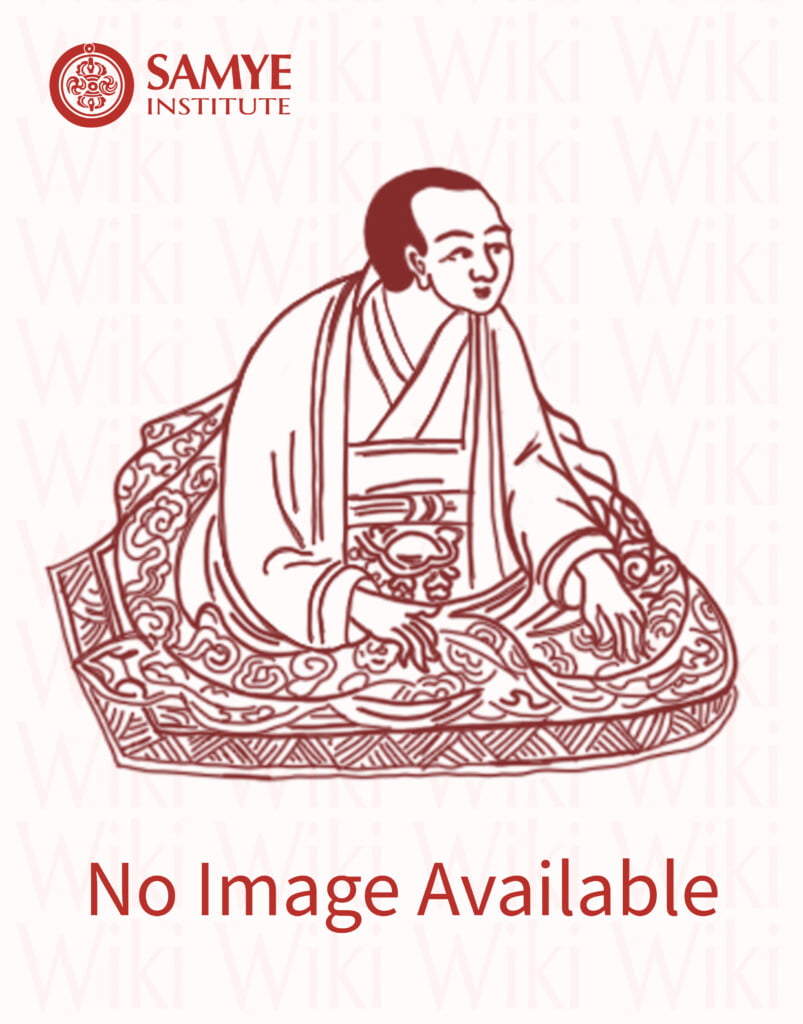The daughter of the great tertön, Chokgyur Lingpa, Könchok Paldrön played a vital role in the preservation of her father’s revelations. Her sons collated the many sadhana texts scattered among disciples, and requested the composition of others. Simultaneously Könchok Paldrön was foremost at preserving the ritual aspects of the tradition. She learned and passed on all the chants and melodies associated with the practices. These were all said to have been revealed to Chokgyur Lingpa in a vision. She also learned and instructed others in the precise method for blowing the Tibetan reed instrument known as the gyaling.
Tulku Urgyen Rinpoche confirmed that she passed down also the specifications for the torma offerings belonging to the Chokling Tersar cycle. He also credited her as a skilled astrologer and medicinal herbalist who dispensed treatments to people daily.
She married Orgyen Chopel, a son of the influential Tsangsar family of Nangchen. They resided in Orgyen Chopel’s family estate, and she spent many years at her husband’s monastery, Lhalam.
Her four sons all were recognized as reincarnate lamas and were all prominent lamas and lineage holders of Chokgyur Lingpa’s revelations: Samten Gyatso (d. 1940?), Lama Sangngak (1886–1949), Tersé Tulku (d. 1956), and Chimé Dorjé (1885–1948), the father of Tulku Urgyen Rinpoche. She also had two daughters: Tashi Chimé and Rigdzin Paldrön.
Blessed by Arya Tārā, Ratna Śrı
This line refers to Chokgyur Lingpa’s daughter, Könchok Paldrön (my grandmother). She had three visions in which she met Lady Tārā, as if in person, and she reached perfect realization before she passed away.
Her mother, Dechen Chödrön, was quite a wrathful woman. Occasionally, she set her will against the great tertön, not seriously, but she was sometimes stubborn enough to start a quarrel. Someone later said that it was her obstinacy that caused her child to be born a girl, but I feel that Könchok Paldrön’s life actually fulfills Padmasambhava’s prophecy.
She was taken in marriage by Orgyen Chöpel, a Vajrayāna master of the Tsangsar family, with whom she had four sons and two daughters. From eldest to youngest, they were Samten Gyatso, Chimé Dorjé, Lama Sang-ngak Rinpoché, Tersé Tulku, then Tashi Chimé and finally Rigdzin Paldrön. The continua- tion of Chokgyur Lingpa’s terma teachings was primarily due to the fact that Könchok Paldrön bore four sons who performed an immense service in propagating the lineage. This was all possible because their mother was an emanation of Vajrapāṇi — which is something remarkable in itself.
Könchok Paldrön was an accomplished meditator and the local people had deep faith in her. Often they would ask for some grains of barley, blessed by her, to carry in a small amulet bag. They would also tie her protection amulets around the necks of their goats and sheep. Some people even tested whether the protection actually worked by shooting rifles at their goats. They would say: “Each time I hit the goat, it cries out in pain, ‘Baaaaah!’ but upon closer inspection, I can never find a bullet wound anywhere. The amulet has made my goat bulletproof, and I’m not lying!” Actually, this was not such a bad thing, for it increased people’s trust.
One interesting point to note is that her guru was her own son — Samten Gyatso. He was the one who pointed out the essence of mind to her so that she recognized it unmistakably. Samten Gyatso told me that he was amazed by the level of meditation that she achieved. Near the end of her life, she had reached the level known as the ‘collapse of confusion,’ at which point there are no more dreams during sleep as the dream state has become totally purified. In the scriptures, in this regard, it is said that at a certain point the stream of dreaming ceases, so that the continuity of luminous wakefulness remains uninterrupted, day and night.
People were amazed by Könchok Paldrön. One’s flow of conceptual thoughts would immediately diminish, the moment one entered her room. The mind simply quietened down. One would feel very lucid and quiet. It was extraordinarily palpable.
Könchok Paldrön was seventy or seventy-one when she died. There was a surprising quantity of sindhura powder on the bones that remained after her cremation. I also heard that one of these bones bore an image of Tārā. Dzongsar Khyentsé and other masters considered this image to be very important and I believe that Dzongsar Khyentsé still has the bone in his possession.
Tulku Urgyen Rinpoche in The Great Tertön: The Life and Activities of Chokgyur Lingpa, Lhasey Lotsawa Translations, 2016, pp. 374-75.



